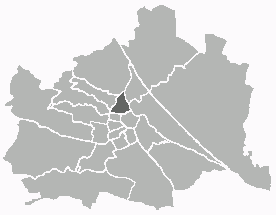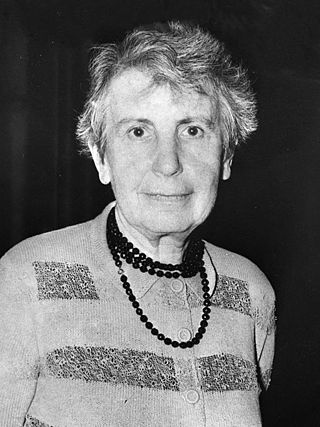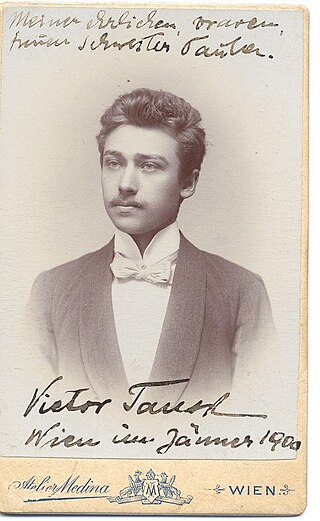Psychoanalysis is a set of theories and therapeutic techniques that deal in part with the unconscious mind, and which together form a method of treatment for mental disorders. The discipline was established in the early 1890s by Sigmund Freud, whose work stemmed partly from the clinical work of Josef Breuer and others. Freud developed and refined the theory and practice of psychoanalysis until his death in 1939. In an encyclopedia article, he identified the cornerstones of psychoanalysis as – "the assumption that there are unconscious mental processes, the recognition of the theory of repression and resistance, the appreciation of the importance of sexuality and of the Oedipus complex." Freud's students Alfred Adler and Carl Gustav Jung developed offshoots of psychoanalysis which they called individual psychology (Adler) and Analytical Psychology (Jung), although Freud himself wrote a number of criticisms of them and emphatically denied that they were forms of psychoanalysis. Psychoanalysis was later developed in different directions by neo-Freudian thinkers, such as Erich Fromm, Karen Horney, and Harry Stack Sullivan.

Sigmund Freud was an Austrian neurologist and the founder of psychoanalysis, a clinical method for evaluating and treating pathologies seen as originating from conflicts in the psyche, through dialogue between patient and psychoanalyst, and the distinctive theory of mind and human agency derived from it.

Alfred Ernest Jones was a Welsh neurologist and psychoanalyst. A lifelong friend and colleague of Sigmund Freud from their first meeting in 1908, he became his official biographer. Jones was the first English-speaking practitioner of psychoanalysis and became its leading exponent in the English-speaking world. As President of both the International Psychoanalytical Association and the British Psycho-Analytical Society in the 1920s and 1930s, Jones exercised a formative influence in the establishment of their organisations, institutions and publications.

Alsergrund is the ninth district of Vienna, Austria. It is located just north of the first, central district, Innere Stadt. Alsergrund was incorporated in 1862, with seven suburbs. As a central district, the area is densely populated. According to the census of 2001, there were 37,816 inhabitants over 2.99 square km.
Psychoanalytic theory is the theory of personality organization and the dynamics of personality development relating to the practice of psychoanalysis, a clinical method for treating psychopathology. First laid out by Sigmund Freud in the late 19th century, psychoanalytic theory has undergone many refinements since his work. The psychoanalytic theory came to full prominence in the last third of the twentieth century as part of the flow of critical discourse regarding psychological treatments after the 1960s, long after Freud's death in 1939. Freud had ceased his analysis of the brain and his physiological studies and shifted his focus to the study of the psyche, and on treatment using free association and the phenomena of transference. His study emphasized the recognition of childhood events that could influence the mental functioning of adults. His examination of the genetic and then the developmental aspects gave the psychoanalytic theory its characteristics. Starting with his publication of The Interpretation of Dreams in 1899, his theories began to gain prominence.
The Sigmund Freud Archives mainly consist of a trove of documents housed at the US Library of Congress and in the former residence of Sigmund Freud during the last year of his life, at 20 Maresfield Gardens in northwest London. They were at the center of a complicated scandal, described in Janet Malcolm's book In the Freud Archives. Jeffrey Masson writes about it in Chapter Nine: "Disillusions" of his book Final Analysis.

Anna Freud CBE was a British psychoanalyst of Austrian-Jewish descent. She was born in Vienna, the sixth and youngest child of Sigmund Freud and Martha Bernays. She followed the path of her father and contributed to the field of psychoanalysis. Alongside Hermine Hug-Hellmuth and Melanie Klein, she may be considered the founder of psychoanalytic child psychology.

Josef Breuer was a distinguished physician who made key discoveries in neurophysiology, and whose work in the 1880s with his patient Bertha Pappenheim, known as Anna O., developed the talking cure and laid the foundation to psychoanalysis as developed by his protégé Sigmund Freud.
The British Psychoanalytical Society was founded by the British neurologist Ernest Jones as the London Psychoanalytical Society on 30 October 1913. It is one of two organizations in Britain training psychoanalysts, the other being the British Psychoanalytic Association.

The Freud Museum in London is a museum dedicated to Sigmund Freud, located in the house where Freud lived with his family during the last year of his life. In 1938, after escaping Nazi annexation of Austria he came to London via Paris and stayed for a short while at 39 Elsworthy Road before moving to 20 Maresfield Gardens, where the museum is situated. Although he died a year later in the same house, his daughter Anna Freud continued to stay there until her death in 1982. It was her wish that after her death it be converted into a museum. It was opened to the public in July 1986.

Victor Tausk was a pioneer psychoanalyst and neurologist. A student and a colleague of Sigmund Freud, he was the earliest exponent of psychoanalytical concepts with regard to clinical psychosis and the personality of the artist.
The International Psychoanalytical Association (IPA) is an association including 12,000 psychoanalysts as members and works with 70 constituent organizations. It was founded in 1910 by Sigmund Freud, from an idea proposed by Sándor Ferenczi.
The Vienna Psychoanalytic Society, formerly known as the Wednesday Psychological Society, is the oldest psychoanalysis society in the world. In 1908, reflecting its growing institutional status as the international psychoanalytic authority of the time, the Wednesday group was reconstituted under its new name with Sigmund Freud as President, a position he relinquished in 1910 in favor of Alfred Adler. During its 36-year history, between 1902 and 1938, the Society had a total of 150 members.

Dorothy Trimble Tiffany Burlingham was an American child psychoanalyst and educator. A lifelong friend and partner of Anna Freud, Burlingham is known for her joint work with Freud on the analysis of children. During the 1960s and 70s, Burlingham directed the Research Group on the Study of Blind Children at the Hampstead Clinic in London. Her 1979 article on blind infants, "To Be Blind in a Sighted World," published in The Psychoanalytic Study of the Child, is considered to be a landmark of empathic scientific observation.

Joan Hodgson Riviere was a British psychoanalyst, who was both an early translator of Freud into English and an influential writer on her own account.

Valery Moiseevich Leibin is a Russian psychoanalyst, Ph.D., head of the department of history and theory of psychoanalysis in Institute of Psychoanalysis, Professor of Moscow State Medical Stomatological University, an honorary Doctor of East European Institute of Psychoanalysis, an honorary member of the interregional public organization Russian Psychoanalytical Society, a member of the Academy of Pedagogical and Social Sciences, a chief scientist of Institute for Systems Analysis of Russian Academy of Sciences, a member of the editorial boards of the "Russian Psychoanalytic Bulletin", the philosophic psychoanalytic journal "Archetype", "Psychoanalytic Review" and "Review of Psychoanalysis". According to the rating given by "Psychological newspaper" Valery Leibin is in the top ten most prominent psychoanalysts in Russia.
Harald Leupold-Löwenthal was an Austrian neurologist and psychoanalyst known for his involvement in the establishment in 1971 of the Sigmund Freud Museum and in its further development. Co-founder of the Sigmund Freud Society.

Hermine Hug-Hellmuth was an Austrian psychoanalyst. She is regarded as the first psychoanalyst practicing with children and the first to conceptualize the technique of psychoanalysing children.

Eva Marie Rosenfeld was a Jewish-German-British psychoanalyst, an analysand of Sigmund Freud and Melanie Klein.
Lydia Marinelli was an Austrian historian, editor, academic author and curator. She also displayed originality and flair as an exhibition organiser. Her speciality was the history of psychoanalysis. The most public aspect of her career involved her work as curator of the Sigmund Freud Museum in Vienna.













